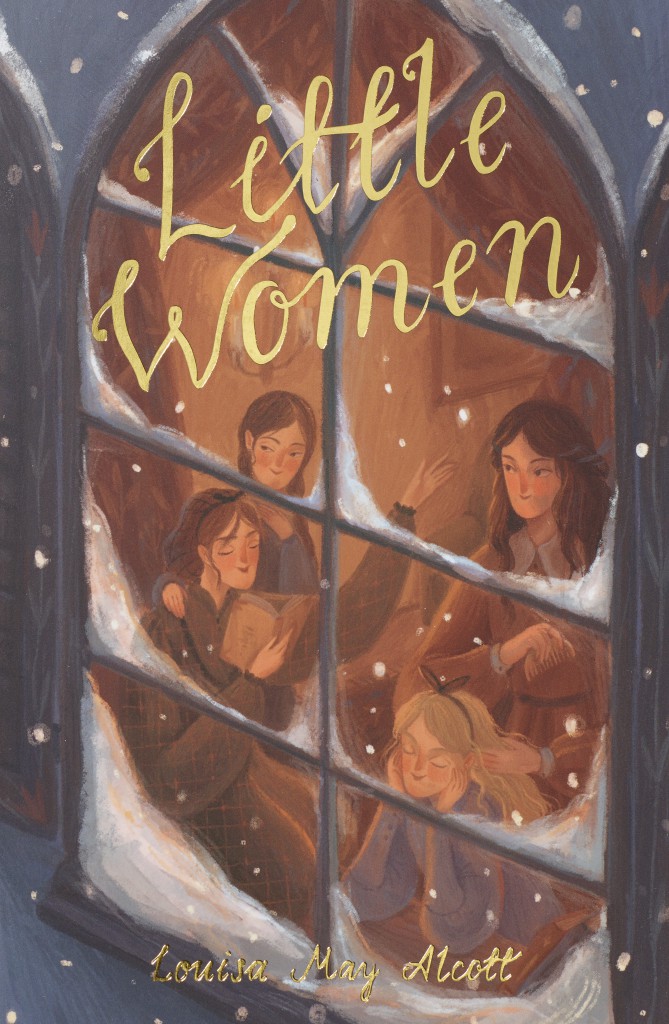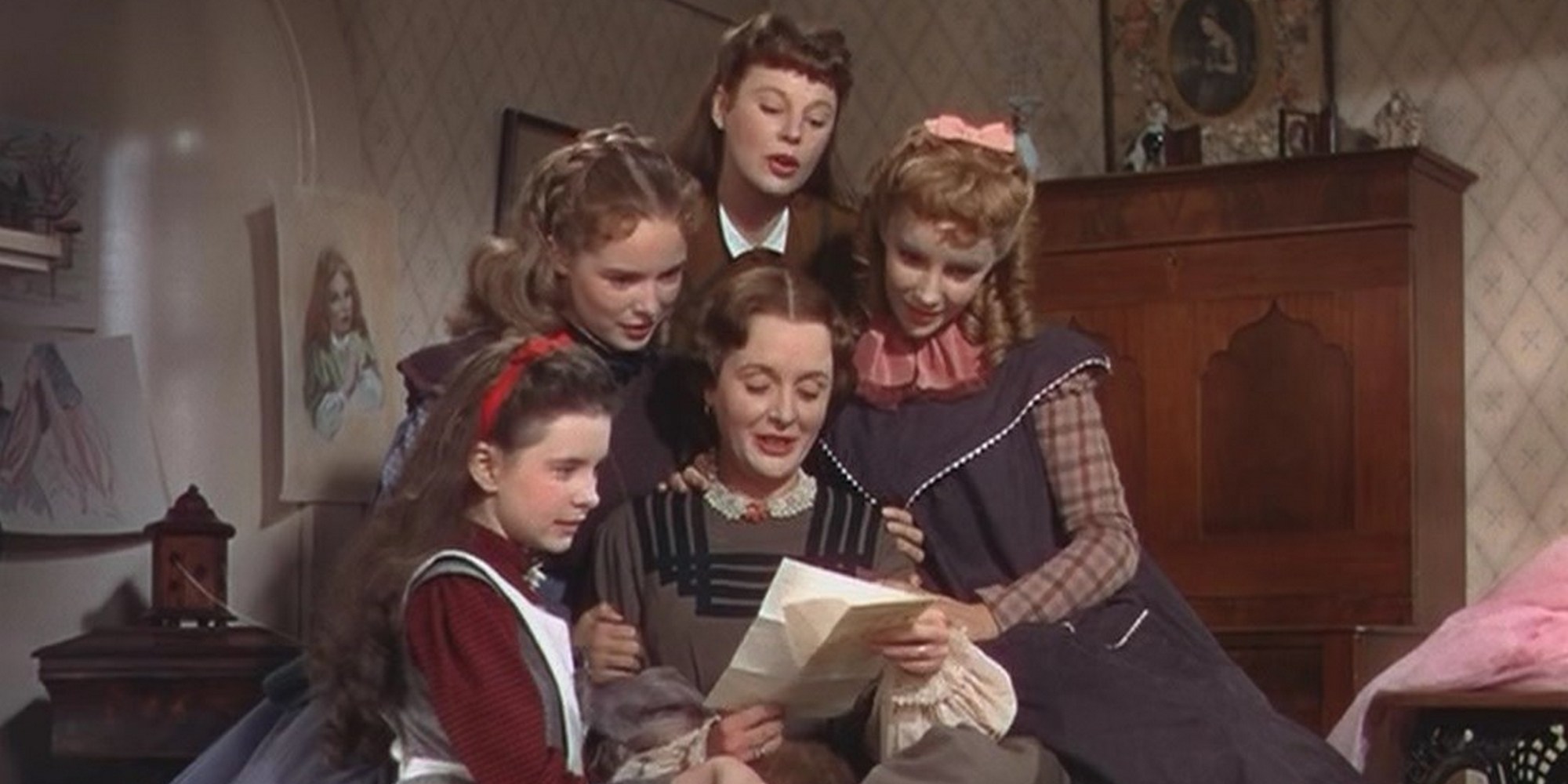
Alcott’s ‘Little Women’ on the big screen
Stefania Ciocia goes on the hunt for the next best thing to reading Alcott’s novel
It had always been something of an embarrassment for me to admit that I had not seen any of the film adaptations of Little Women, considering how passionate and long-standing an admirer of Louisa May Alcott’s novel I am. Of course, it is bound to be the case that “The Book Was Better” – a young woman in my yoga class occasionally wears a t-shirt with precisely this motto, the mantra of bibliophiles. Even so, it has been a bit remiss of me not to have checked out how the March sisters’ story fares on celluloid until now. Two of the classic adaptations predate me by quite some time: with the best will in the world, there is no way I could have caught the original release of George Cukor’s Little Women in 1933 or Mervyn LeRoy’s Technicolor remake in 1949, but I am of an age when I ought to have made a beeline for Gillian Armstrong’s 1994 film.
While the reasons for this youthful lapse will have to remain a mystery, Celebrate the Sisterhood: 150 Years of Little Women, an event I hosted on 25 November at the Folkestone Book Festival, has given me the nudge to fill in this gap in my cinematic education. The three films each have their own distinctive feel, their strengths, their weaknesses, and their claims to poetic license to capture the essence of the original text. None of their deviations from the letter of the novel has unleashed the purist’s fury in me (though some have come close). I’d happily watch all three of them again. I probably will, too.
If, like me, you can’t wait for Greta Gerwig’s new take on Alcott’s novel – starring Saoirse Ronan as Jo, Emma Watson as Meg, Timothée Chalamet as Laurie, Laura Dern as Marmee and Meryl Streep as Aunt March – here’s what you can expect from its three predecessors. I hope you’ll discover the most suitable adaptation for when you next need a quick Little Women to fix (no use denying it: we’ve all been there), though the perfect version has got to be the one unspooling in your mind’s eye whenever you spend some quality time with Alcott’s book.
My journey of exploration of Little Women on the big screen starts on a miserable, wet day at the end of August: I fire up the wood-burning stove (Christmas won’t be Christmas without crackling wood!), huddle up on the sofa, and reach for one of the DVDs I have just got through the post. The weather calls for an old movie, but the 1933 black-and-white version feels like a step too far against the unexpected greyness of this English ‘summer’ afternoon. I plump for the 1949 film instead.
A short way into it, and certain scenes are simply too familiar: it dawns on me that I must have already seen it with my mother, years ago when I was still living at home in Italy. On lazy weekends, if neither of us had more pressing things to do, we used to hunt for classic films on TV. There was always a good one on, after lunch, back in the day before the explosion of talk shows, quizzes, reality TV and other fillers. Little Women is just the kind of thing that Mamma and I would have had – did have – enormous fun watching together.[1] In whichever version, this is the most perfect mother-and-daughter(s) story.
LeRoy wastes no time in establishing that Jo (June Allyson) is a tomboy: the initial scene shows her running toward home, vaulting over the fence and falling face down into the snow, while Meg, Beth and Amy look on her from indoors. Undaunted, Jo has another, successful, go at the hurdle, and then hits her sisters’ window with a snowball. It’s quite an entrance. Later we see her catch fire, as we know she does, at times, from the novel. Here, however, the incendiary mishap happens during her first visit to Laurie (Peter Lawford). The poor fellow must therefore put out the flames on Jo’s dress by that least gentlemanly of actions: smacking a woman’s derriere.
Jo’s independence and lack of concern for propriety are further showcased in a heated exchange with Aunt March (Lucile Watson) whom she is petitioning for money on Marmee’s (Mary Astor) behalf. Jo cuts short the elderly lady’s lecture tells her to forget she ever asked (“I am too proud to beg for anyone”) and goes off to sell her hair. Her cropped mane is a sight to behold, but while Laurie tactlessly observes its resemblance to a porcupine, Marmee tells Jo that she will never look more beautiful, and her sisters generously concur. It’s a lovely, humorous scene: this Jo doesn’t cry over the loss of her hair, though I must say that I have always loved that touching detail. You can be a tomboy and care about your appearance. The two things do not have to be mutually exclusive.
It should be plain by now that I love June Allyson as Jo. The casting of her sisters is very good too: handsome Meg is played by the gorgeous Janet Leigh (eleven years before the shower scene in Hitchcock’s Psycho), while a teenage Elizabeth Taylor gives us a doll-like pretty, perfectly petulant and prissy Amy. Margaret O’Brien’s Beth is the youngest of the four which – I can’t believe I am writing this – kind of works for me even if it is woefully unfaithful to the book. O’Brien is a child, convincing in her guilelessness and timidity, and in the otherworldly acceptance of her impending fate in her final speech to Jo. But it’s in watching the scene where she thanks Mr Laurence (C. Aubrey Smith) for the piano that I find I have something in my eye. If sentimentality is not your thing, maybe this should not be your go-to adaptation.
Another favourite detail for me is the blossoming of Jo’s romance with Professor Bhaer (Rossano Brazzi, in his Hollywood debut) over music. Jo is lured into the drawing room, and almost moved to tears, by Bhaer’s rendition at the piano of Goethe’s ‘Nur wer die Sensucht kennt’ (‘Only those who know longing’); it’s a more overtly romantic choice than the ‘Kennst du das Land’ (‘Do you know the land [where the lemon trees grow]’) of the original. An invitation to the opera ensues.[2] Jo’s rapturous response to the experience – “I don’t want to be a writer anymore. I want to be a singer.” – and Bhaer’s amused observation that she had made similar remarks after their visits to art galleries and the circus (!) neatly captures the difference in age between the two, and makes Jo all the more charming for her unchecked enthusiasm.[3]
As I have written before, I have no trouble buying into Jo’s maturation and reneging of spinsterhood, at the end of the novel. When Allyson’s Jo confesses to Meg that she might have capitulated to Laurie after all – “not that I love him any differently, but because it means more to me to be loved now than it used to” – this admission has the ring of truth, just as it does in the book.[4] As for her relationship with Bhaer, it’s good to see that Jo’s tears when he criticizes her sensational stories are put in the context of the tough day she’s been having: she has just found out that Laurie snubbed her when he visited New York, and that Amy is accompanying Aunt March to Europe. Wouldn’t you cry too?
Without missing a beat, Jo collects herself, at pains to reassure the distraught Professor that she is not weeping over his feedback: she knows she can write better work, but her stories do pay the bills. Alcott’s Jo is not so unmoved by Bhaer’s censure. Regrettably, the 1949 film reprises the idea that Jo seeks the Professor’s approval and takes it one unforgivable step further. It is thanks to his good offices that Jo’s novel, My Beth, finds a publisher.[5] This is not cool. I can just about handle the romantic metaphor of the couple taking shelter under the shared umbrella – Alcott did the original declaration of love in the rain way before Four Weddings and a Funeral – but I draw the line at Bhaer being given any credit for Jo’s literary success. She can do it on her own, you know. I much prefer the ending of the other two films, and more’s the pity because I am really quite fond of this version otherwise.
About a month later, for you can have too much of a good thing, and I am ready for Cukor’s 1933 offering. The fact that it stars a young Katharine Hepburn as Jo is going to be a treat in and of itself. Although the screenplay – and the soundtrack – for this film will both be revisited in the 1949 adaptation, the two have a different mood, not only because of the black-and-white vs. Technicolor effect. You can tell that the earlier version came out during the Depression: its call for sacrifices and austerity is amplified by the foregrounding of the tragedy of the Civil War. The movie opens with a scene taken, almost verbatim, from Chapter IV in the novel.
At the United States Christian Commission in Concord, amidst the flurry of (mostly female) volunteers’ activity, we meet Marmee (Spring Byington) in conversation with an old gentleman who has lost three sons in the war; he is about to travel to Washington where his fourth child, also a soldier, is convalescing. Marmee is so touched by this story that she adds a financial donation of her own to the second-hand overcoat that the man has come looking for. The emphasis on communal efforts and the need for hard work continues in our introduction to the girls: Meg (Frances Dee) is with her charges, and Jo reads something suitably edifying to Aunt March (Edna May Oliver). As soon as the formidable lady nods off, Jo tries to sneak away but is caught – Aunt March must be a light sleeper – and dispatched to polish the staircase bannister before taking her to leave.
This odd request – Jo is her companion, not a servant – is there to provide another clue to the young woman’s mischievousness as she slides down the staircase in an ingenious approach to dusting. Jo’s zany, tomboyish manners play to Hepburn’s strength and are deliberately theatrical. We get a long scene of the play-within-the-novel, including the comical destruction of the set, for example. And if you think that Hepburn-as-Jo-as-mustachioed-villain-Hugo is great (she is), wait until you see her fencing with Laurie (Douglass Montgomery), with fire irons, in an impromptu re-enactment of the duel between Hamlet and Laertes. Jo is Hamlet, of course.[6]
The two younger sisters enter the fray in equally effective, and complementary sketches: Amy (Joan Bennett) is punished for her caricature of Mr Davis, and the caption “Young ladies my eyes are upon you” provides a nice subversive element. On her part, Beth (Jean Parker) sings at the old piano, surrounded by her kittens and ready to spring into action for her share of the housework. Her eventual demise yields a carefully choreographed deathbed scene – even Daisy and Demi are in attendance – after which it falls to Jo to mother the inconsolable Marmee.
Hepburn’s Jo has a steeliness about her, an easy self-confidence mixed with the goofy sensibility typical of screwball comedies. Her stand-out line for me is when she finishes an early manuscript and utters: “There. I’ve done my best. If that won’t do I’ll have to wait until I can do better”. Amen to that, I feel like shouting, as she climbs out of the garret, through the window, in secret pursuit of literary glory. This woman knows what she wants and how to get it. She is in control. In the final scene, she seals her acceptance of the Professor’s bumbling proposal not so much by a sentimental pledge (more of that in 1994) but by her pragmatic “Welcome home” while she leads Bhaer across the threshold of the Marches’ household. Lucky man.
And so to 1994, to Gillian Anderson’s Little Women: with a dream cast headed by Winona Ryder as Jo and Susan Sarandon as Marmee, this is the version targeted at my generation of movie-goers. It’s got to be the Little Women for me, right? I’ll tell you this much for now: it’s the one that got me scribbling frantic notes all along. Tune in for Part 2 of this blog next week, when I’ll ‘fess up my verdict.
In loving memory of my own Mami, Marilena De Lorenzo. This little woman could not have wished for more supportive parents than you and Papà.
Stefania has asked us to donate her fee for this blog to The Eve Appeal. Find out more about the work of The Eve Appeal,
[1] I have spoken to my Dad about this possibility, and he didn’t even let me finish the sentence: of course, Mamma and I watched this film together! He might have watched bits of it with us too. (Football’s more his thing.) He certainly has very strong opinions about the Italian dubbing of Elizabeth Taylor. (Not a fan.) I’m afraid I can’t comment on this technical detail, though I do think that Taylor is a perfect Amy – in English.
[2] I am very susceptible to the appeal of operatic seduction scenes: the sight of Jo in her finery peering through her glasses from the balcony at the theatre is the 19th-century equivalent of Cher and Nicolas Cage in Moonstruck, which – as everybody knows – is the best romantic comedy of all times bar none, except maybe When Harry Met Sally. Passion and glamour (and power struggles) at the Met feature prominently in Edith Wharton’s masterpiece The Age of Innocence (1920), a very different read from Little Women, but another beloved classic of mine. Martin Scorsese’s sumptuous 1993 film version is pitch perfect too.
[3] I ought to say that my older self completely identifies with this opera-crazy Jo. I want to be an opera singer too.
[4] Jo shares this candid admission with Marmee in Part 2, Chapter XIX ‘All Alone’.
[5] In the novel, Jo writes the poem ‘My Beth’ before her sister’s untimely death.
[6] In Chapter XIV, Alcott’s Jo says to Laurie: “You can teach me [fencing]; and then when we play Hamlet, you can be Laertes, and we’ll make a fine thing of the fencing scene”.
Books associated with this article
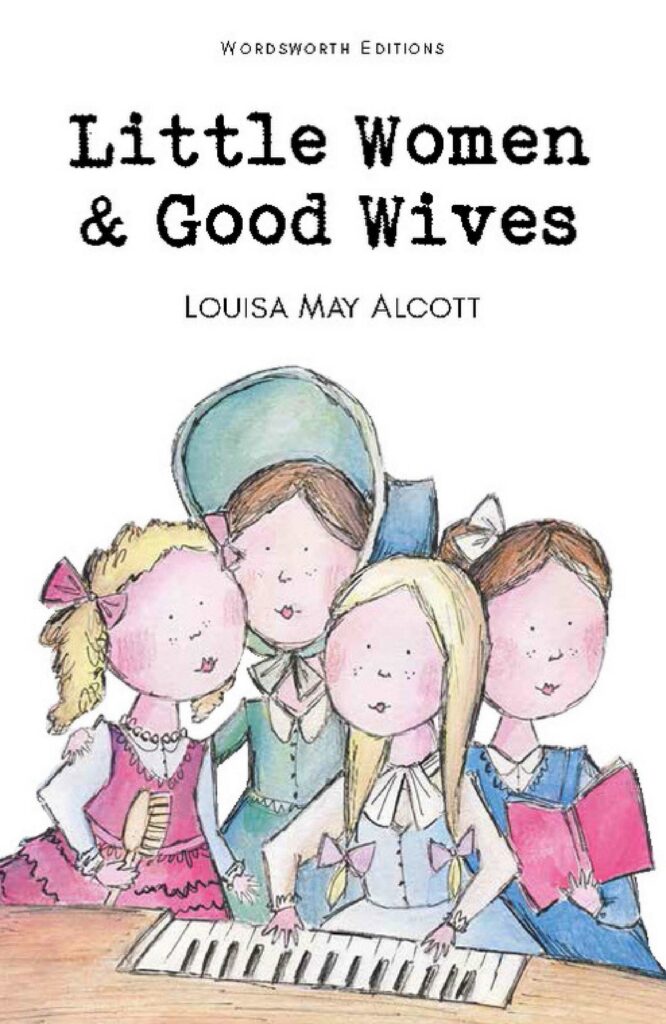
Little Women & Good Wives (Children’s)
Louisa May Alcott
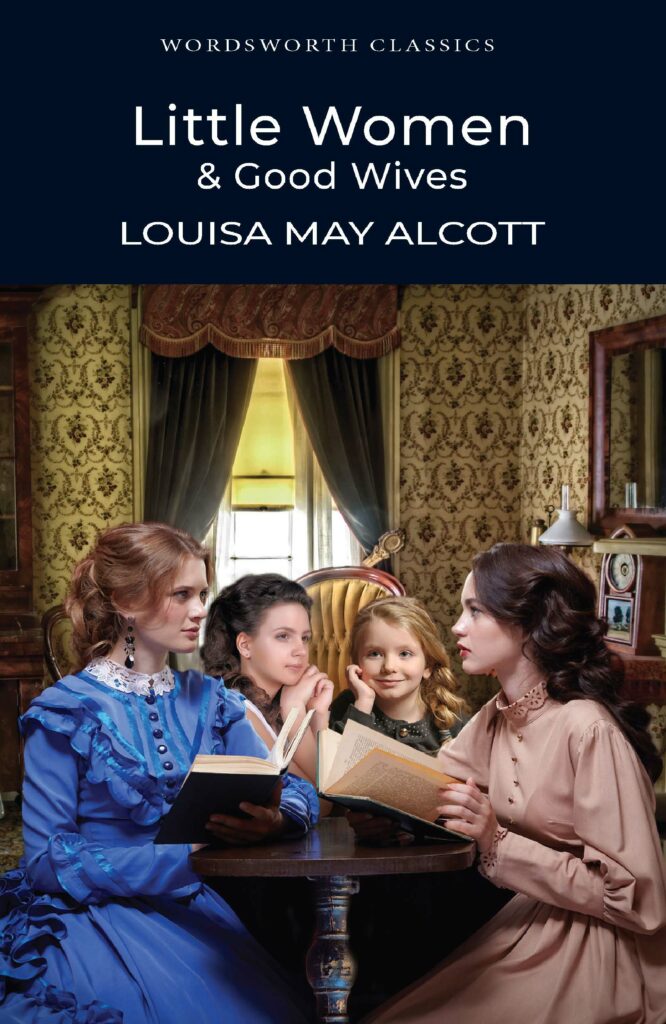
Little Women & Good Wives
Louisa May Alcott
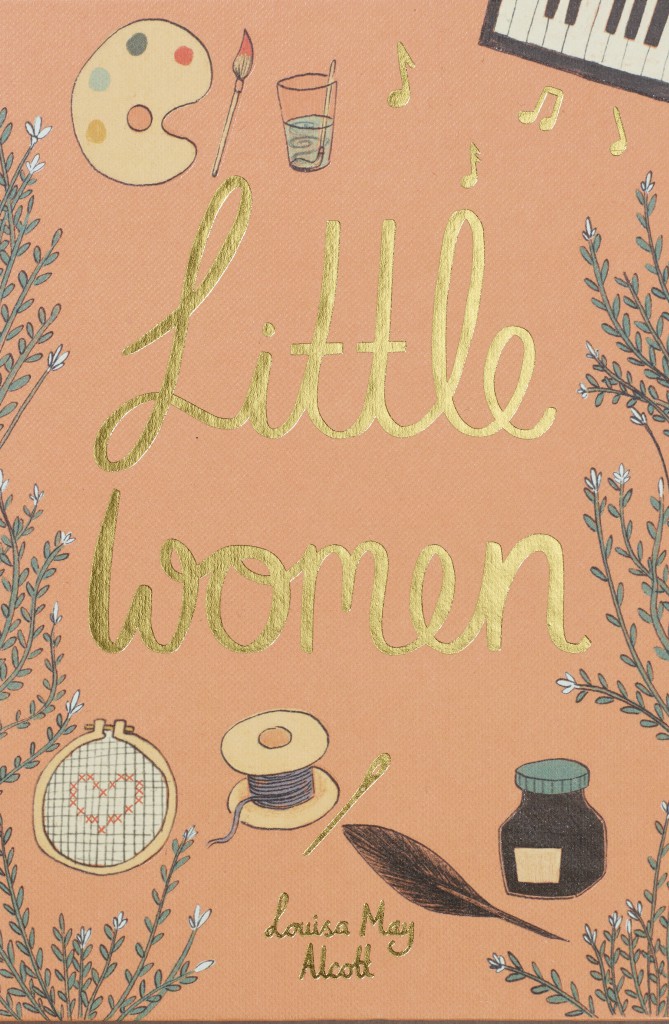
Little Women (Collector’s Edition)
Louisa May Alcott
